The people of these islands are the friendliest people we have come across thus far. Although poor and with very basic living conditions, they are positive and accepting of their circumstances. We often hear the term “living a minimalist lifestyle” in the city – compared to what – a materialistic, wasteful lifestyle? Man oh man, you haven’t seen a minimalist lifestyle, until you have seen this island lifestyle. The islanders have the benefit of the ubiquitous betel nut which most adults chew as a relaxant, mixed with mustard leaves and lime, resulting in their alarming red smiles and teeth – the Zoloft of the third world.
During our stay in Moturina we anchored in the lee of Ninan island, about two miles offshore. This quiet uninhabited island didn’t deter the kids from the main island, rowing their canoes over to trade fruit and vegetables for school books, pens and pencils. Amongst the teenagers, the girls always wanted tampons, while the boys were asking for condoms.
We sailed from Ninan island in a fresh S-E of about 18knots, tacking a few times while passing Bagaman island and a few more in the Calvados chain, before anchoring in a beautiful bay at Pana Numara. The next day, Hans wanted a rest, so we motored over to a neighbouring island famous for its blue lagoon and to do some snorkelling.
The three previous solar installations that Hans had done the previous three years, were all playing up due to user interference. However, life had come to a standstill as there was a big political rally taking place under a big tree in the village centre, where a parliamentary candidate, Henry Larry was holding forth on a megaphone. Hans would later negotiate with Bernard, the village chief on what had to be done to effect repairs and prevent future problems.
We were running low on water as our water maker was playing up, so we opted to sail West to Nimoa island, one of the few islands with water. We made it as far as Wanim island, also known as Grass island, where we anchored for the night after catching a Spanish Mackerel. Annie was delighted, as she has been hunting one for months. We traded some paw-paws and lemons for fishing line. Annie used our empty beer cans and rolled off 20m of fishing line on each, fitted it with a sinker and a hook, making dozens of these kits for kids.
The following day was an easy sail to Nimoa island, where we anchored off Coleman and Juliana’s house to drop off four solar panels for later installation. In return we were able to collect 100l of fresh water from their spring.
Then a short trip to the South of the island where the hospital and Hope Academy high school are located. We brought a lot of baby clothes and nappies for donation to the hospital which the manager, Pius Wiseman gratefully accepted. He has done an amazing job of rebuilding the hospital after the 2014 cyclone. They handled more than 200 births in 2016 without a single fatality.
We also met Barry Kirby, an Australian flying doctor who is quite an inspiration. He came to PNG as a carpenter years ago, but his wife did not settle down and left him. With no kids and having fallen in love with the islands and their people, he went back to Oz to finish high school and study medicine at age 40 and get a pilot’s licence. He qualified at age 52 and came back to serve the people of PNG. See: http://www.sbs.com.au/news/article/2015/05/06/builder-obstetrician-giving-life-mothers-png
His friend, Peter Neville a PNG born, Australian educated businessman was also on the island to fix the broken down generator in the village and campaign for the upcoming parliamentary elections in July. He is one of the two white candidates in the election. A big, jovial character, we had him over for dinner on Friday night while Dr Barry as the locals call him, did an emergency flight to Alotau to operate on a lady who was haemorrhaging badly after a delivery. Mission accomplished, he flew back to Nimoa the next morning.
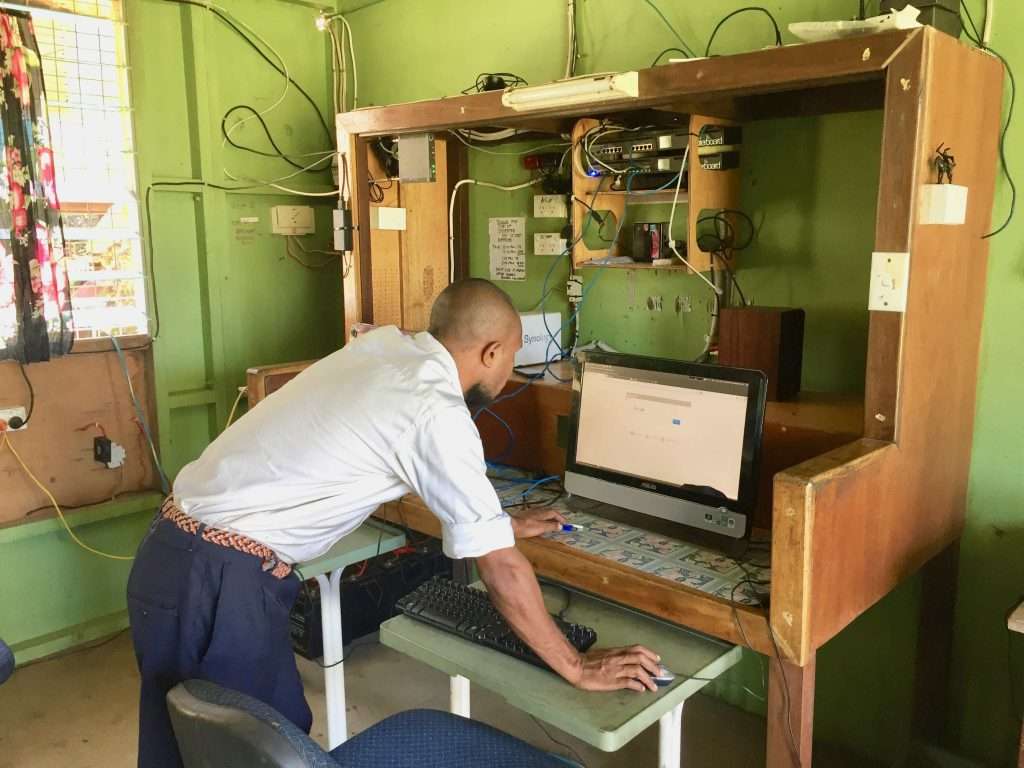 Noel, the headmaster, sets up one of their ancient desktops in their “computer room” for me to work on.
Noel, the headmaster, sets up one of their ancient desktops in their “computer room” for me to work on.A further complication arose: Our satellite phone decided to go into a loop while searching for satellites, finding them (there are 66 in the Iridium constellation) and then, not connect to them. So, no Emails or SMS’s. This posed a problem, as we had to contact the suppliers of our water maker in Oz to get guidance on getting the unit going again. Fortunately, the Hope Academy has a satellite dish with intranet for their school. Noel, the headmaster and Mary-Ellen his deputy, were taken by our donations to the hospital and offered access to one of their computers to use Gmail. We fired off Emails to H2Go and Iridium who responded by the next morning, with further questions. We replied to these by Friday lunchtime, but then had to call it a day as the school was closing for the weekend. They offered us another 100l of fresh water which we gladly accepted.
On Saturday morning we motored back to Coleman’s abode and arrived with gifts, to secure another 100l of water from his spring. He also gave us water to do our washing which had piled up. Having shown us through his well-built compound, he visited us by canoe in the afternoon to inspect our floating house and chew the fat. Back at the school on Monday morning, their server had carked it, so we decided to sail back in a 15knot following wind to Gigila island to assist Hans. He had finished on Gigila, so after spending the night in the lee of the island, we sailed to Pana Wina island where we found him installing solar in a very poor community.
Because of the muddy bay and mangroves, mud crabs flourish here and we were able to trade two huge mud crabs for clothes – most of the kids were naked. Hans showed us how to wrangle these aggressive crabs into a pot of boiling water and after cooking, how to crack open their huge claws and bodies for their amazingly tasty meat – much better than the crayfish, or lobster, of which we were getting a bit tired by now.
Predictwind offshore indicated a good weather window of moderate S-E winds to sail the nearly 200nm West, back to the mainland. In order to get back to a place where we could get the desalinator fixed, we transferred the balance of the solar gear and hospital/clinic donations to Seagoon and bid Hans farewell when we set sail at 7am the next morning. We enjoyed a broad reach and sometimes, a poled out run in 15 – 20 knots of wind and anchored in the lee of Punawan island in the Bramble Haven lagoon at about 5pm. More trading!
The following day we covered a similar distance to Wari island, poled out in 14-18 knots where we anchored at 4:30pm for a rolly night in the lee. The third day saw us reach Samarai island in the China Strait, off the mainland at about lunchtime. After 6 attempts, we finally anchored in the strong current running through the China Strait, launched the dinghy and went ashore to check in with Customs. Felix Dosi the Customs officer, was however in Alotau for the week, so his wife said we may as well check in and out at Port Moresby, our next port of call on the mainland. All very relaxed!
Neville, the well-spoken school principal, took us under his wing and motored with us across the strait to his school, where their rainwater tanks were full. He quickly rounded up 8 students to fetch and fill our water containers with about 100l of water. He would accept nothing in return, but was happy for us to give the students packets of biscuits. We set off ironically, in a heavy downpour and strong headwinds, motoring as far as small Deka Deka island, to anchor in the lee for a rolly night.
Overnight, the wind increased to 20 knots so we decided to take shelter behind the much bigger Doini island. Our recently met friend, Peter Neville built a resort on this island and insisted we should not pass it by. We are now sitting out a weeklong S-E buster in the lee of this lovely island, before we sail to Port Moresby. More about this in our next post.

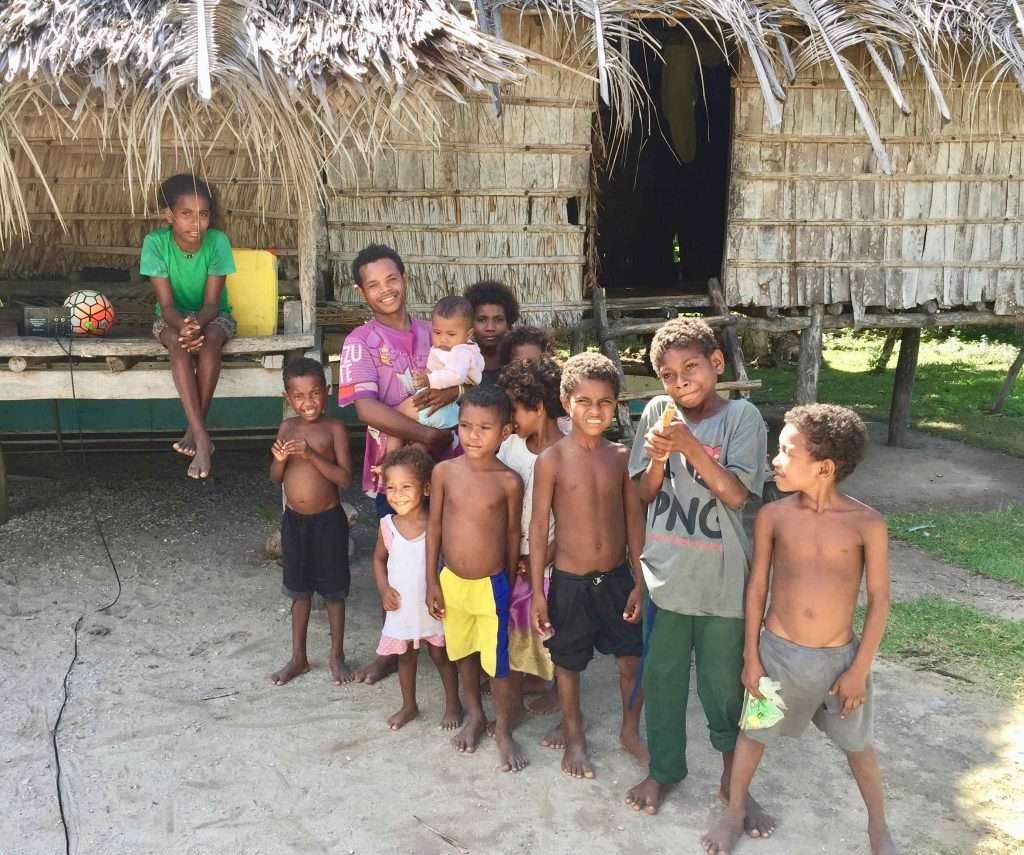
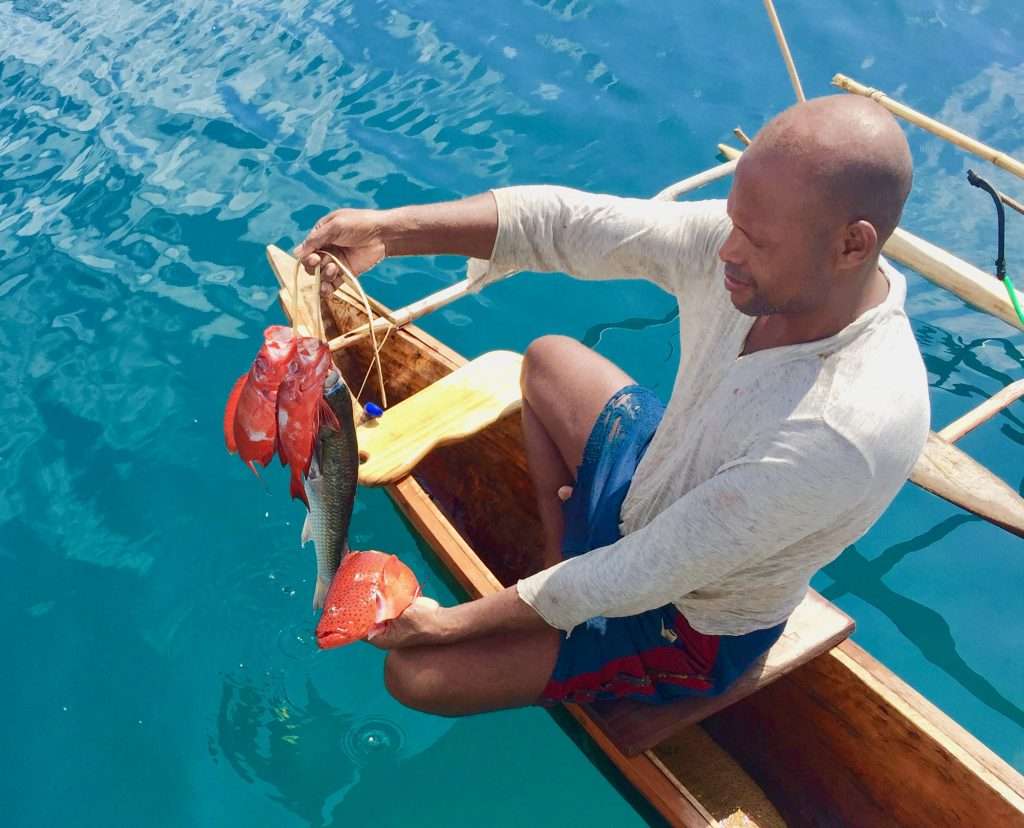
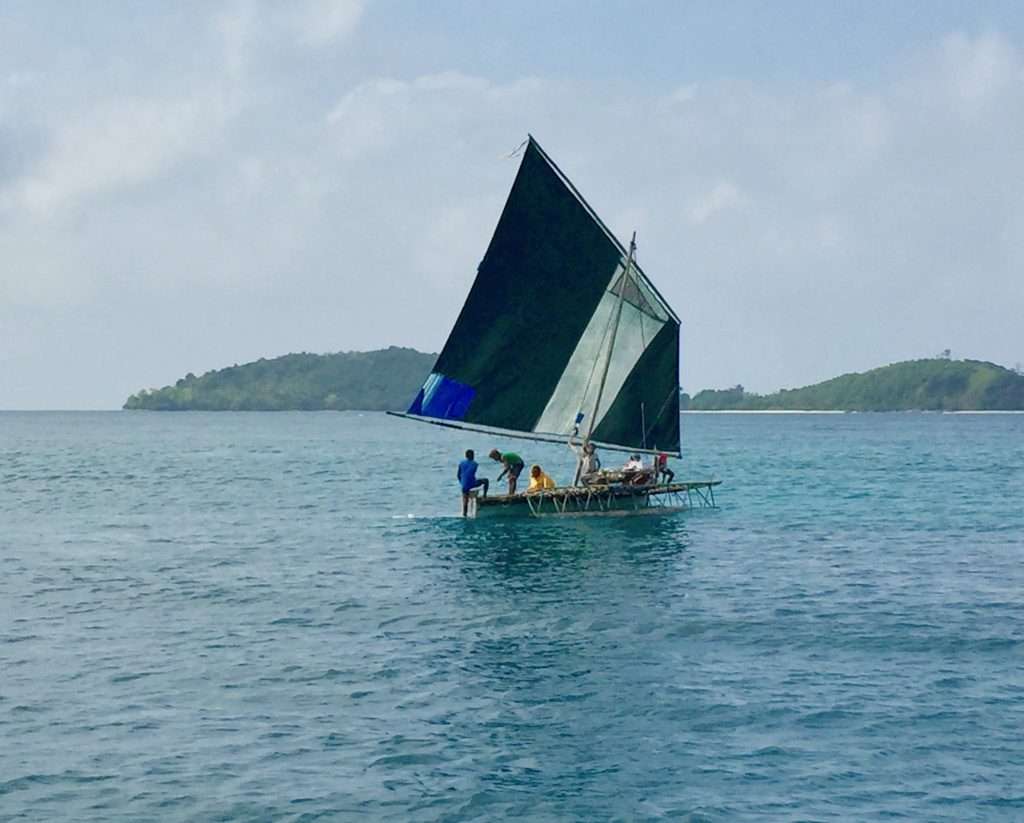
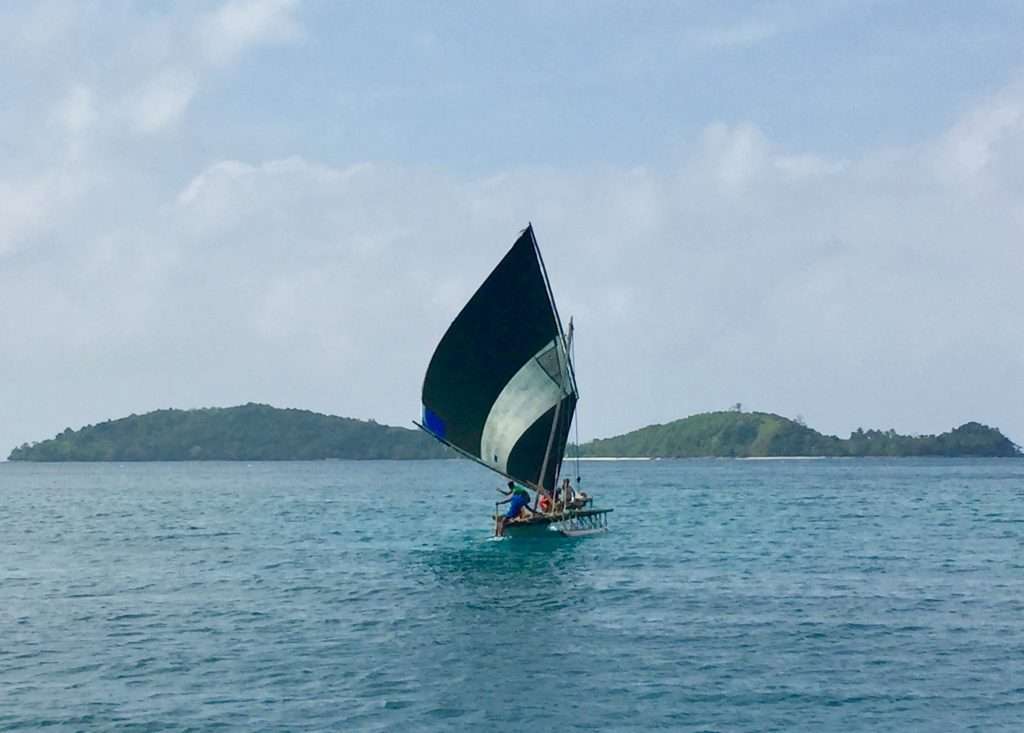
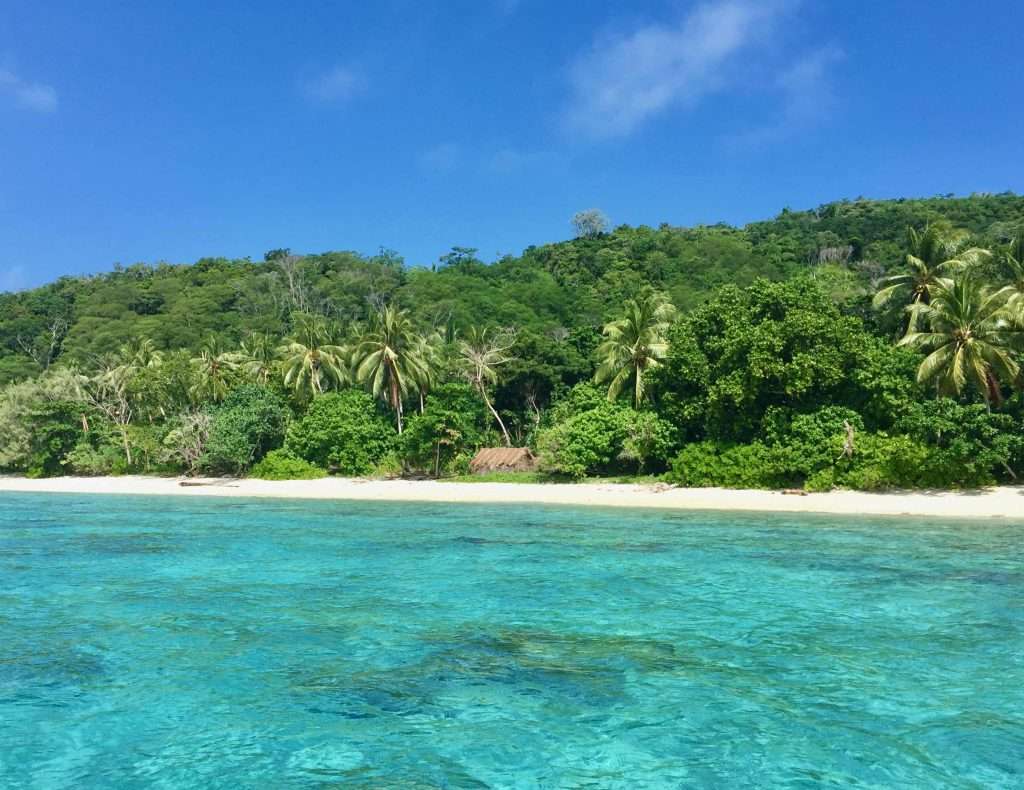
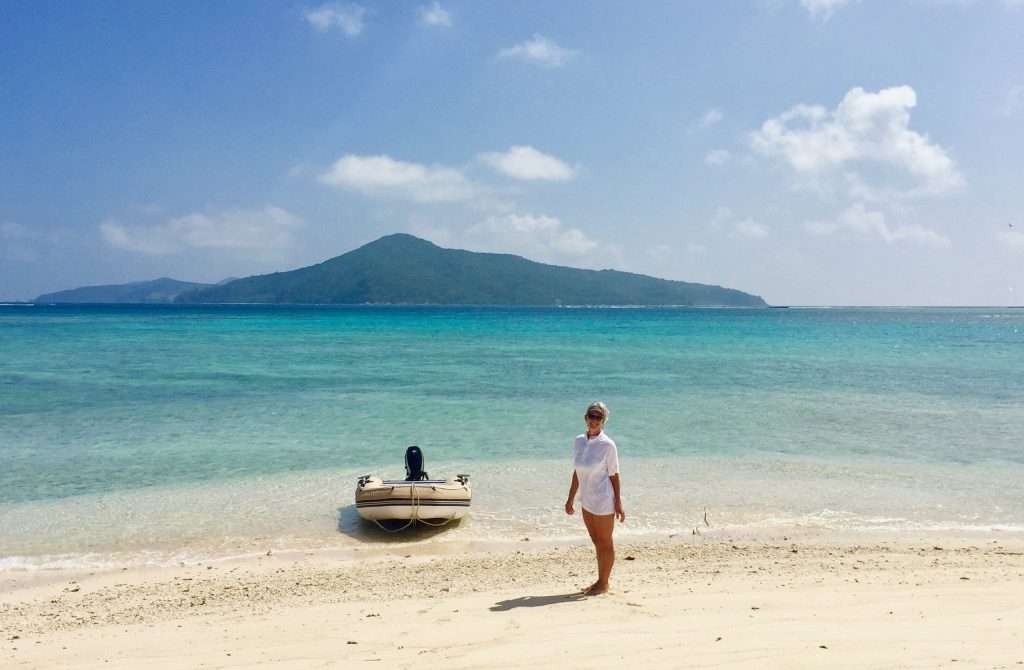
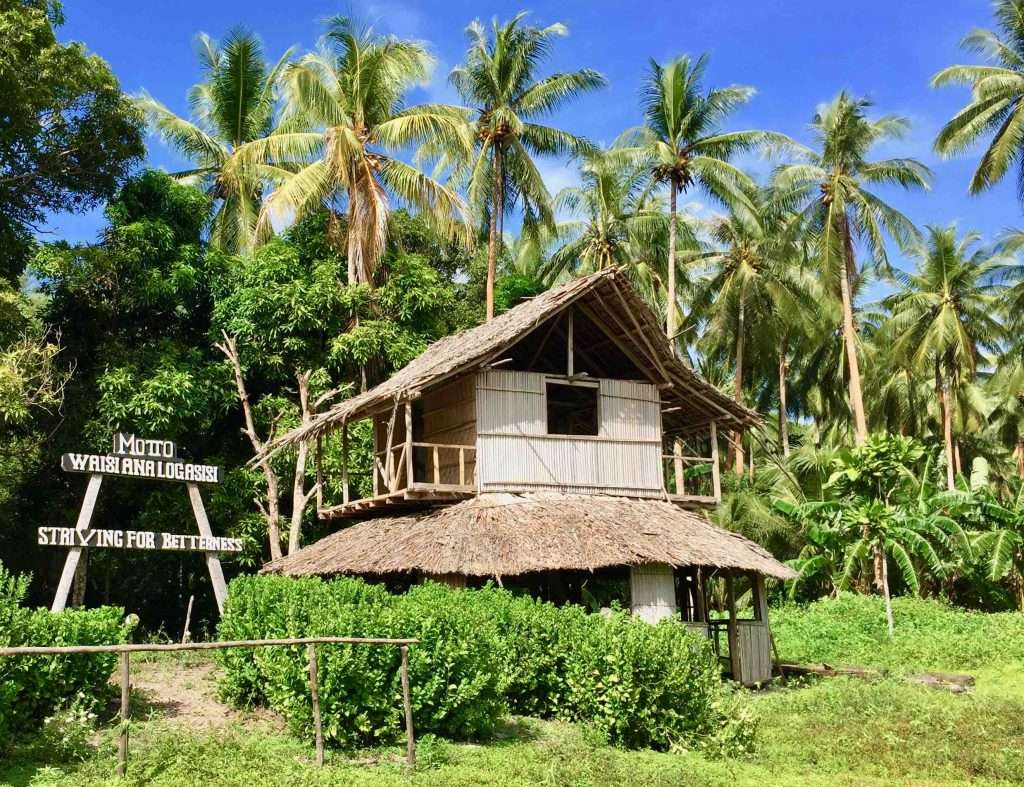
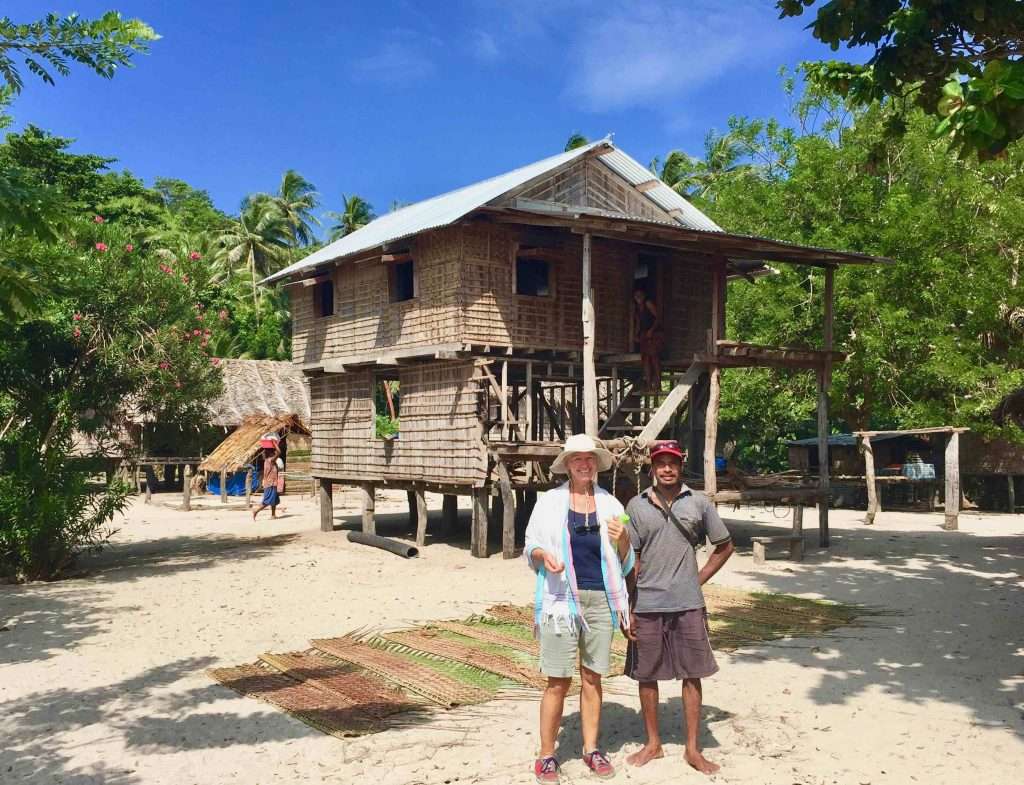
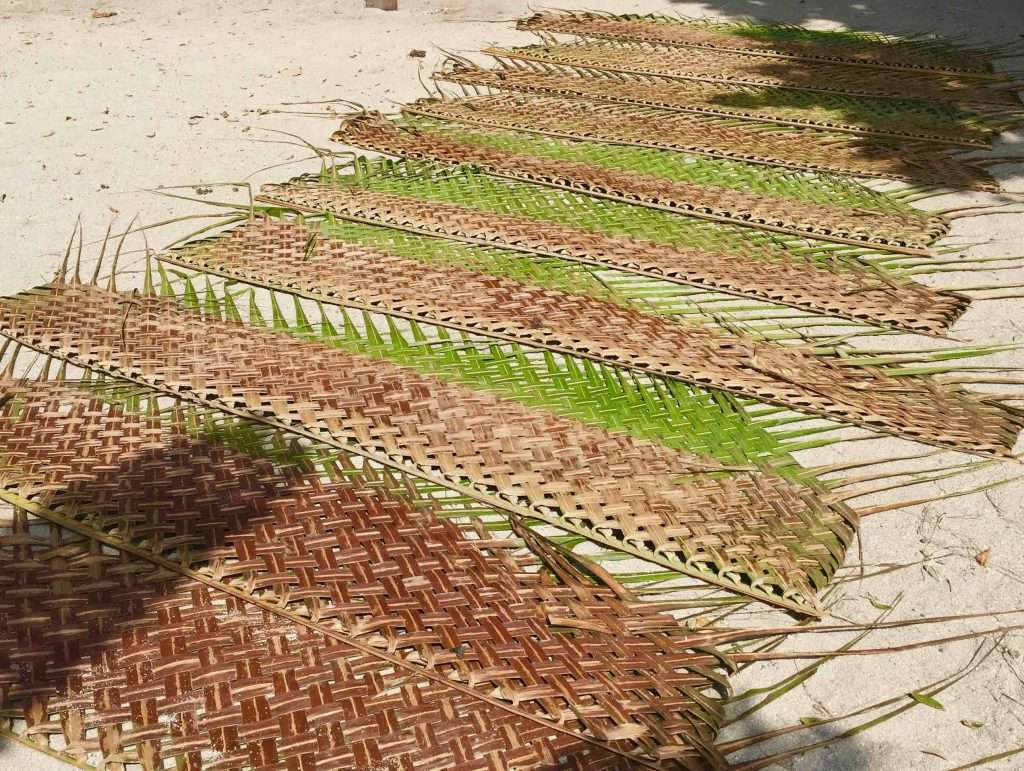
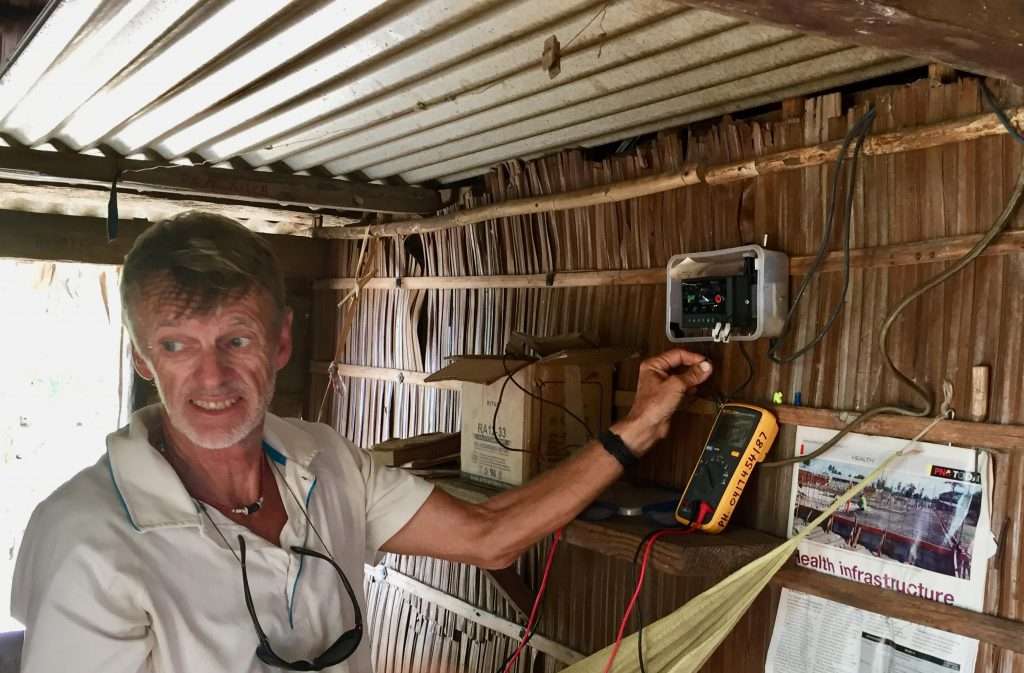
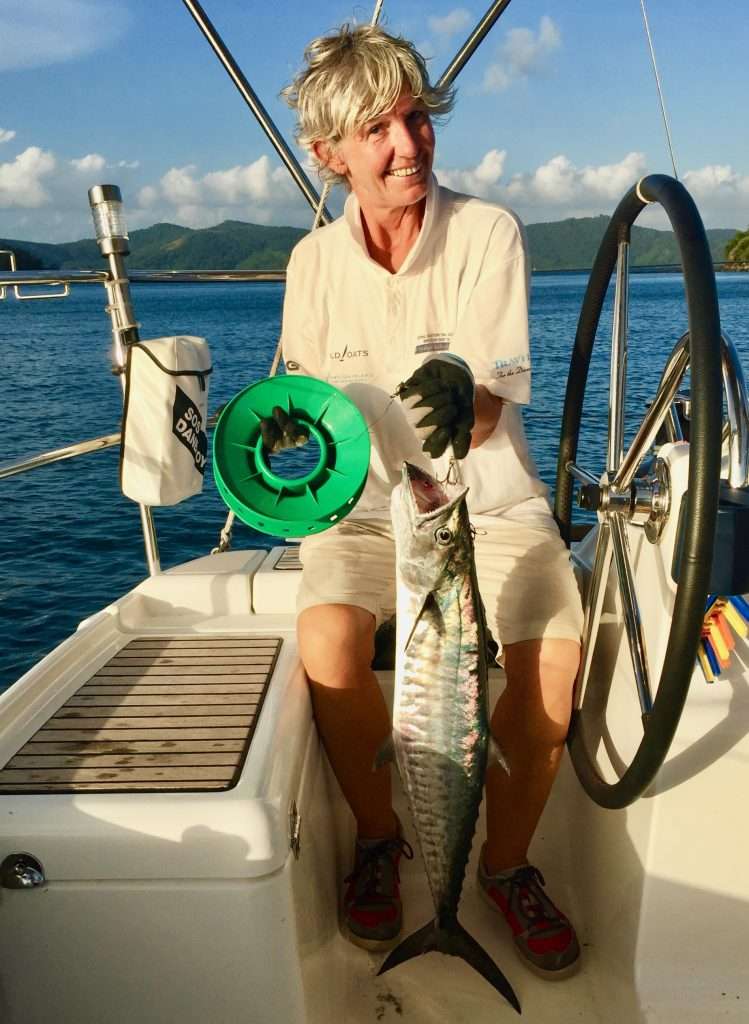
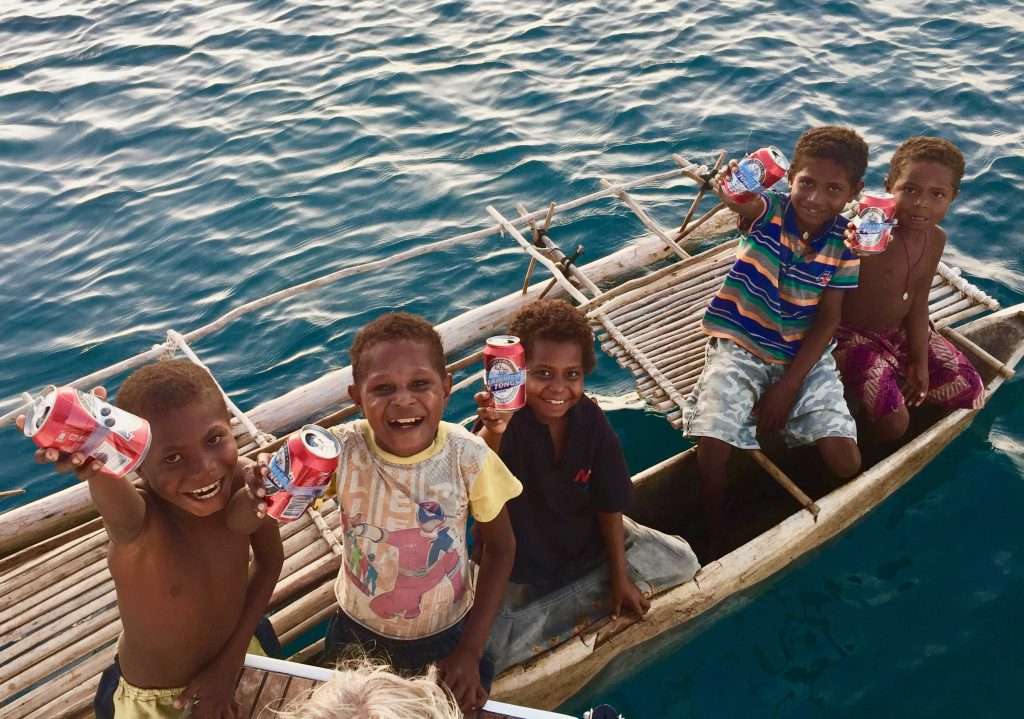
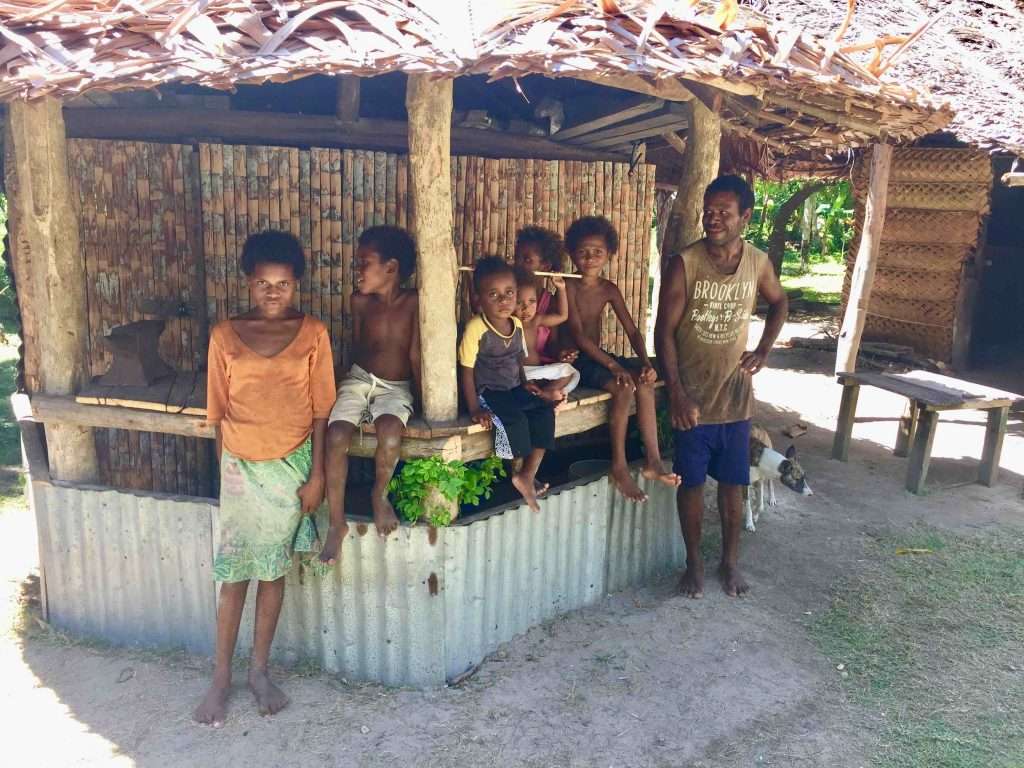
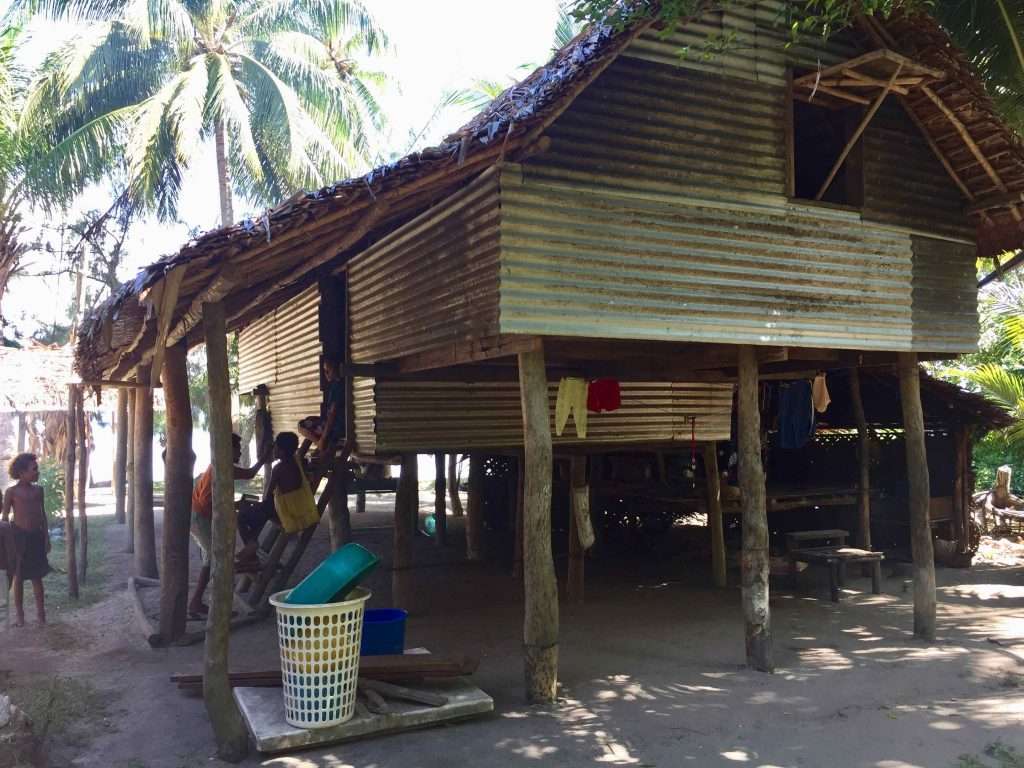
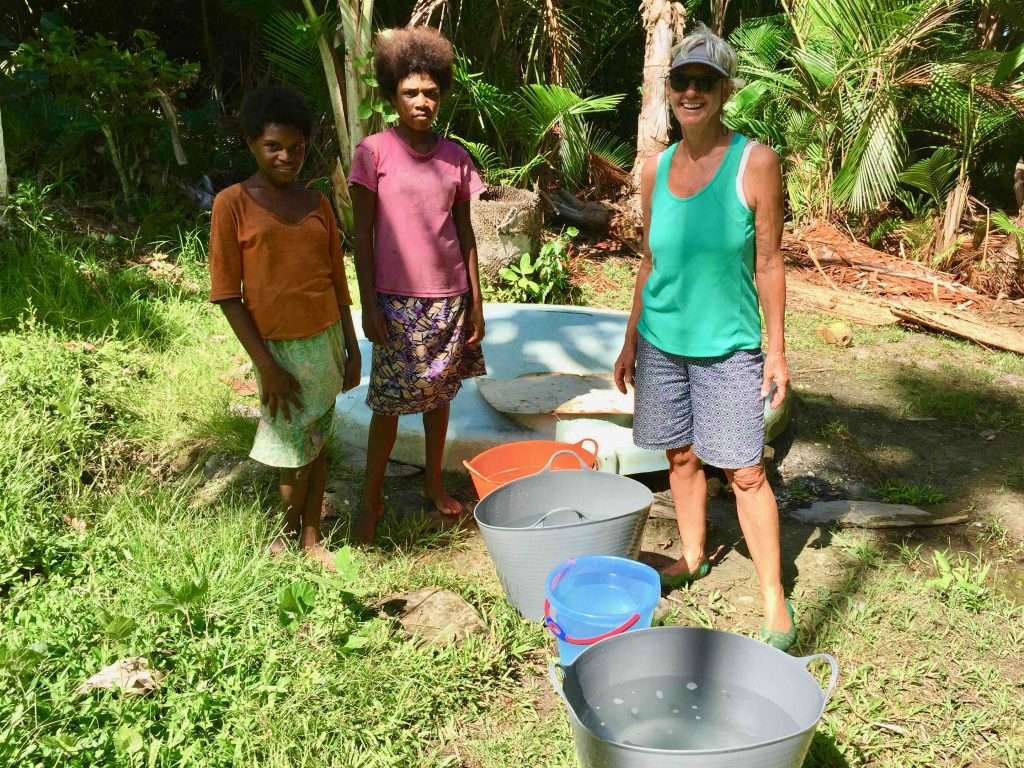
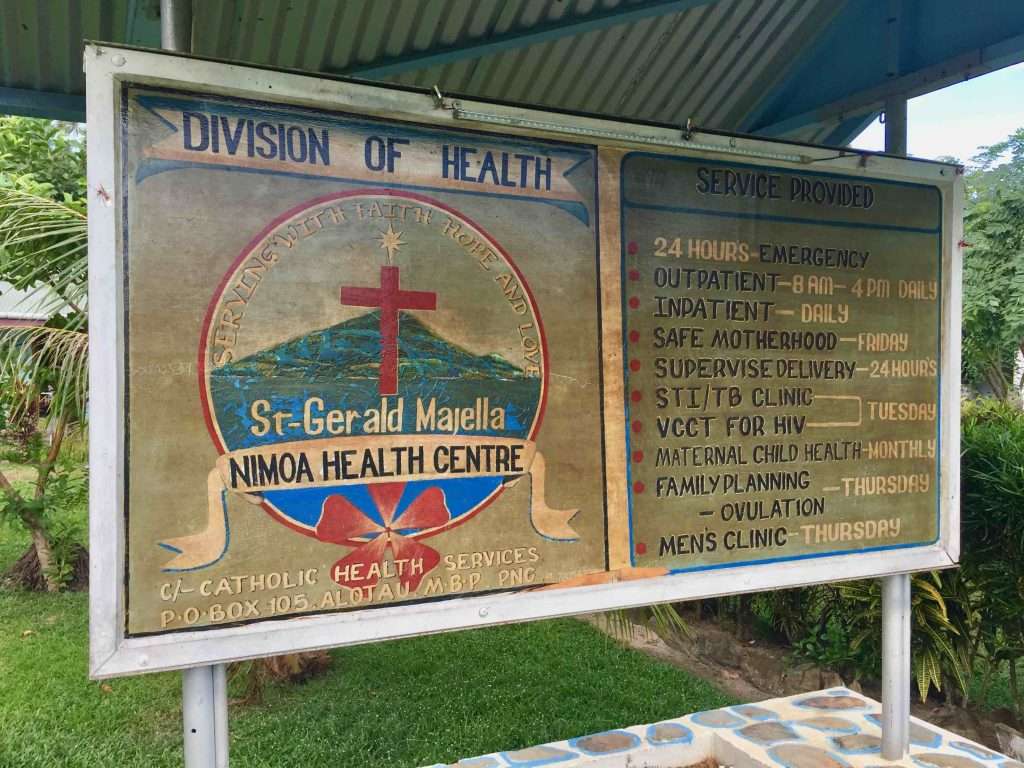
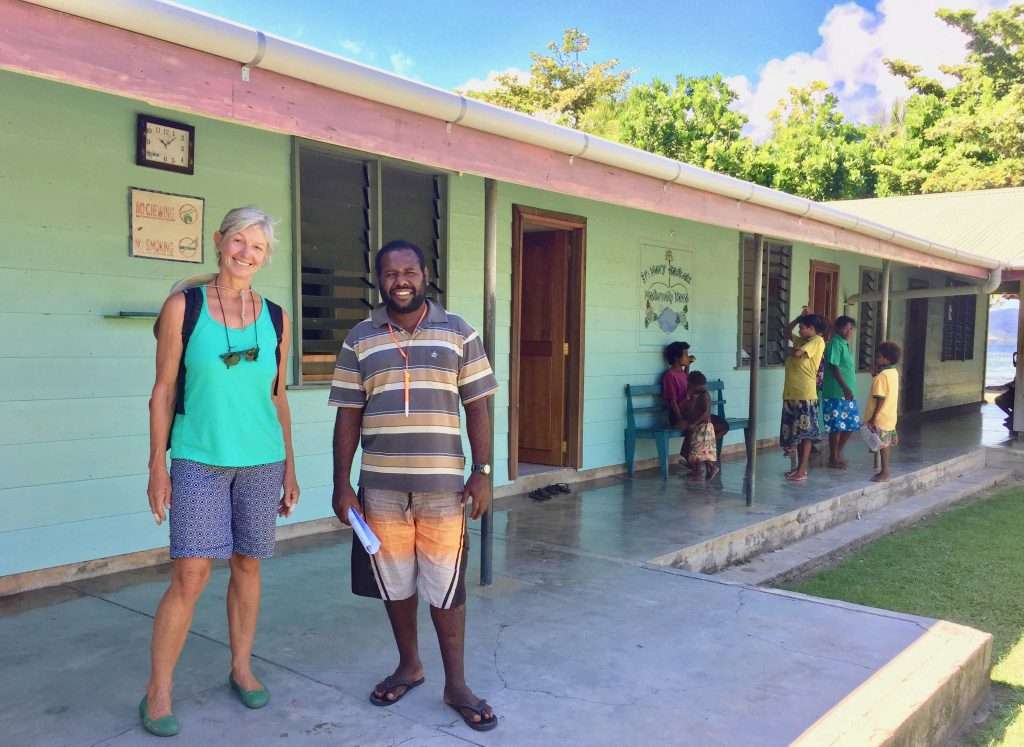
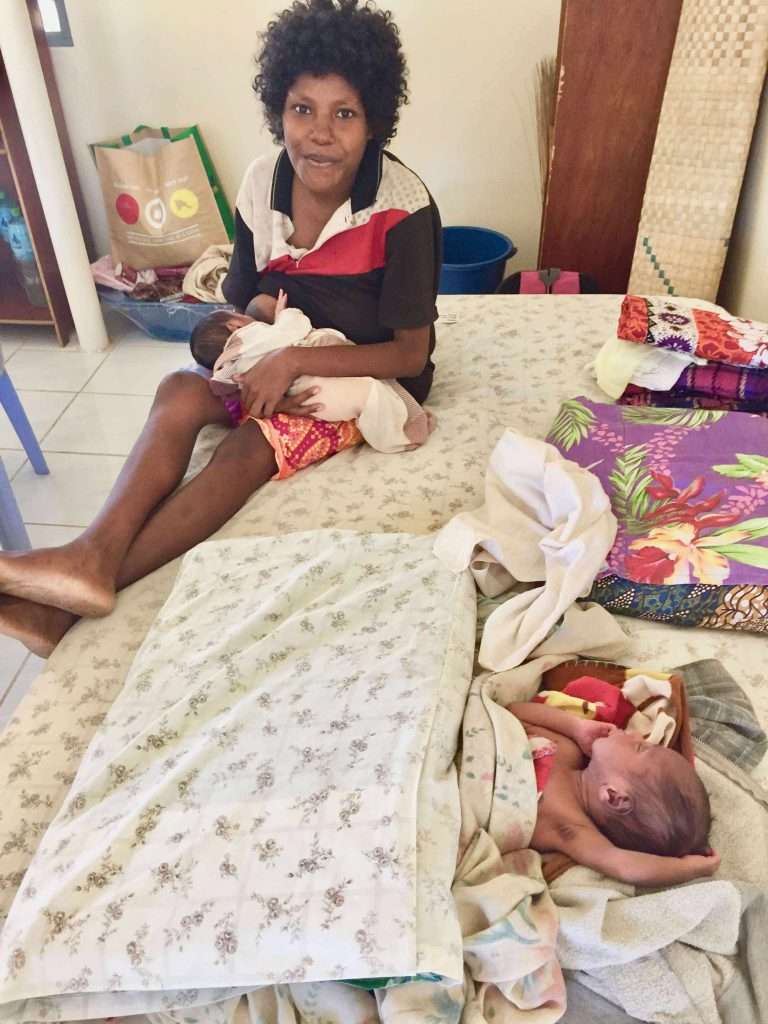
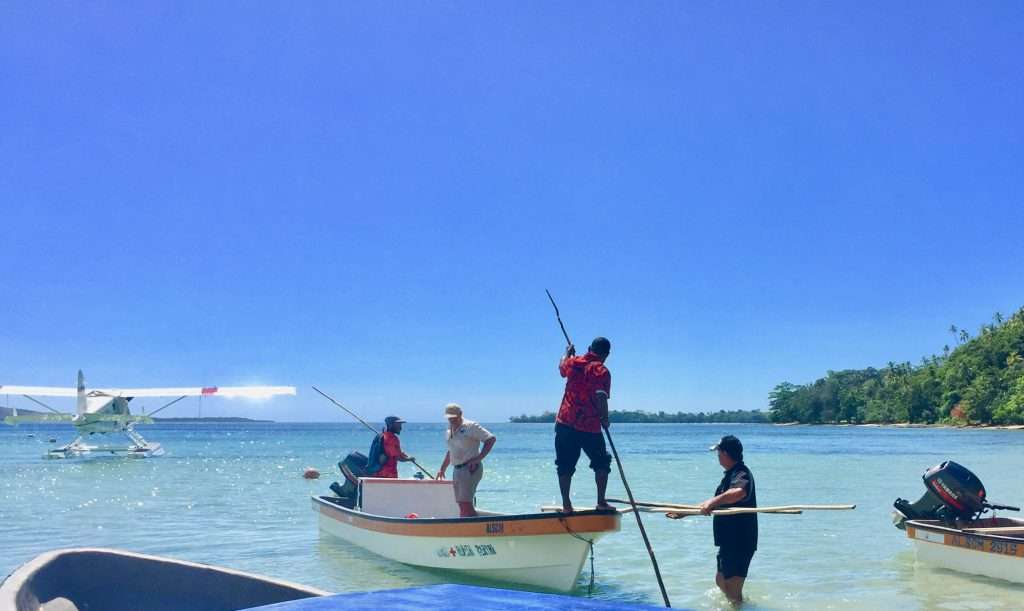
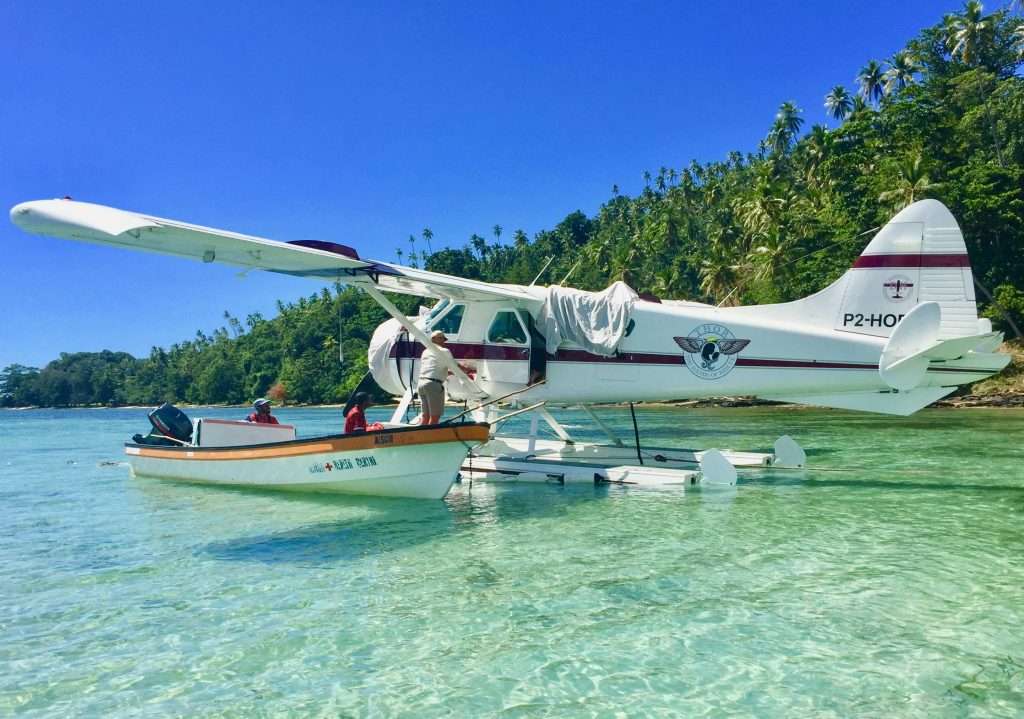
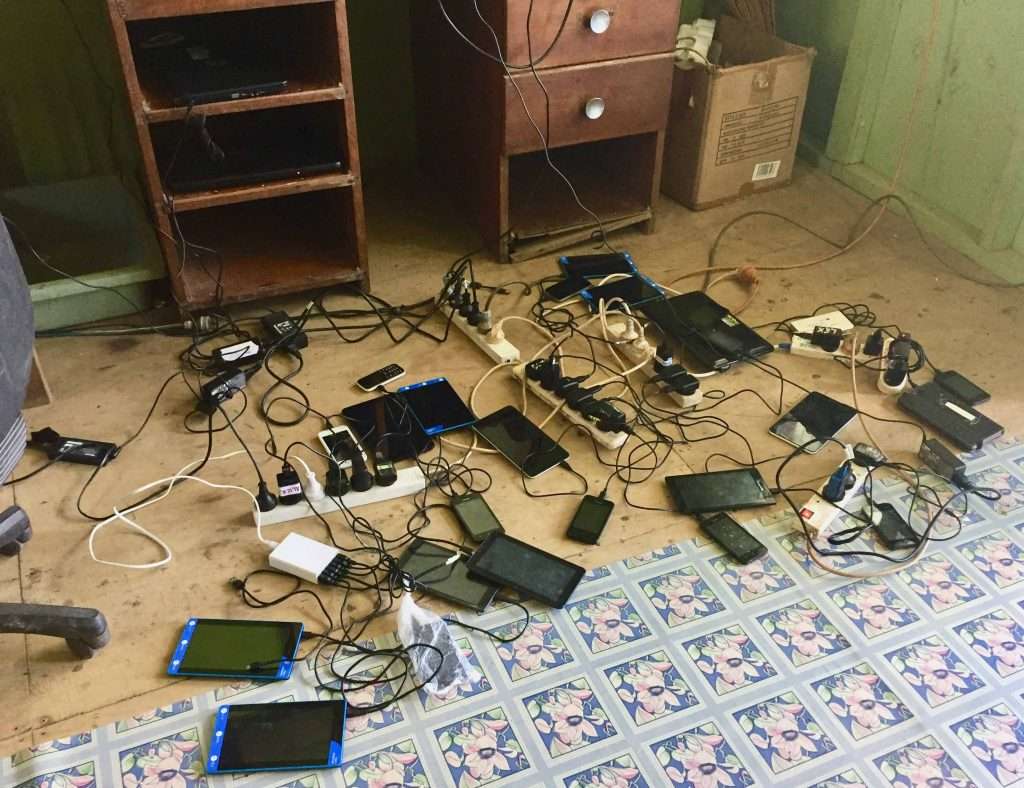
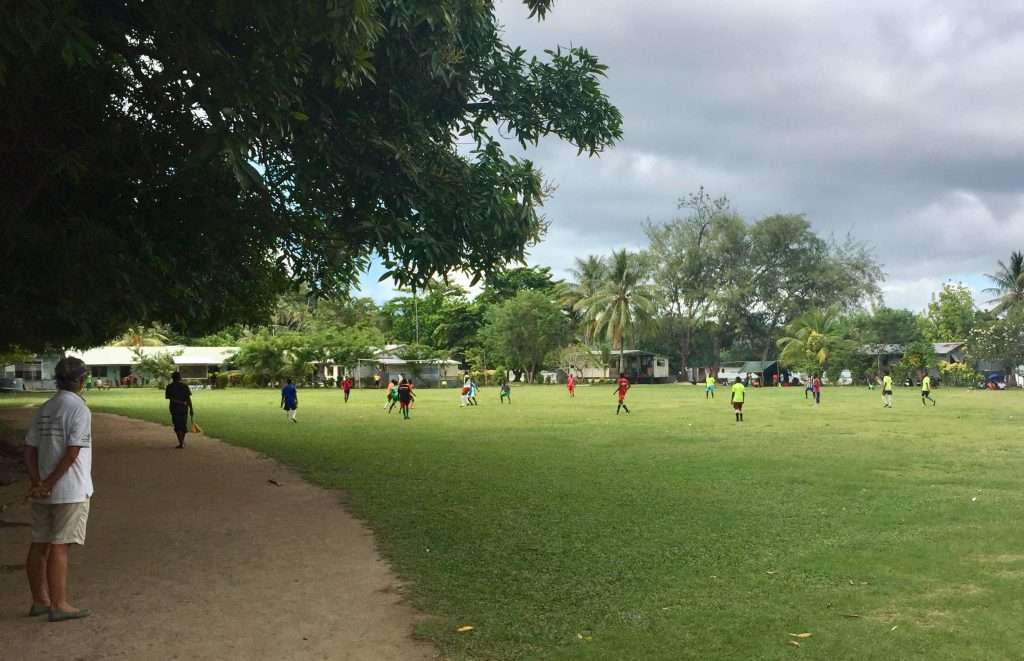
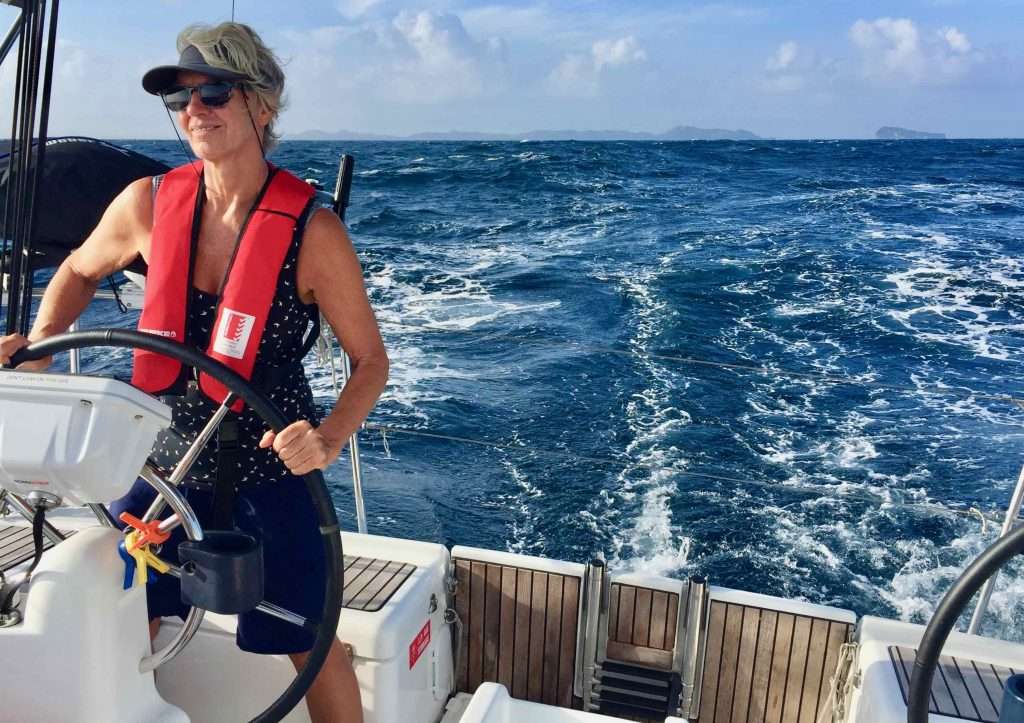
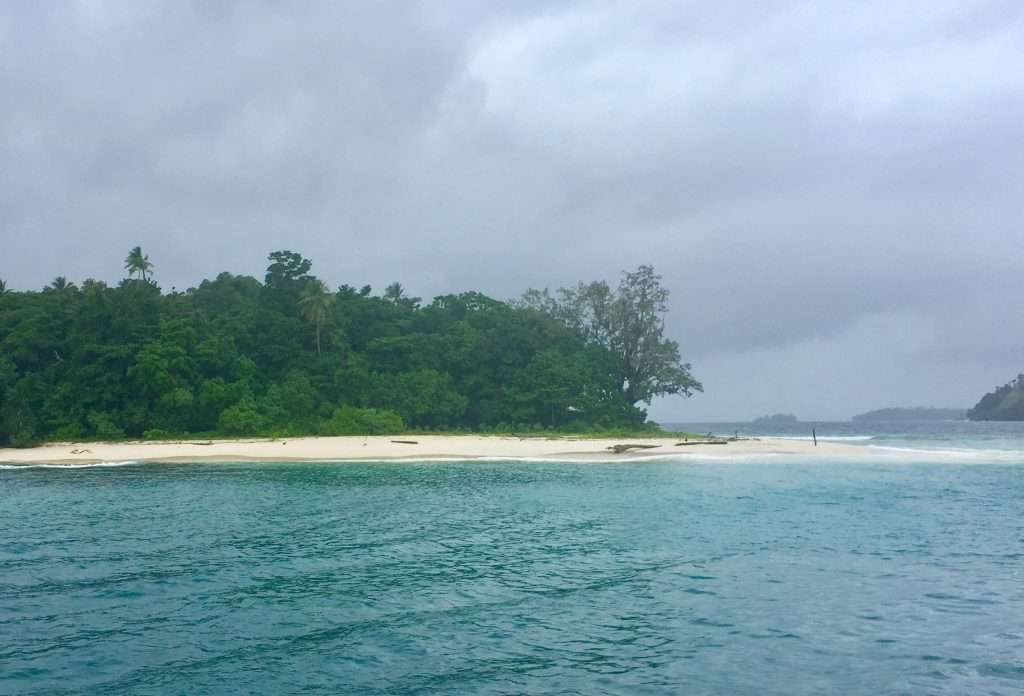
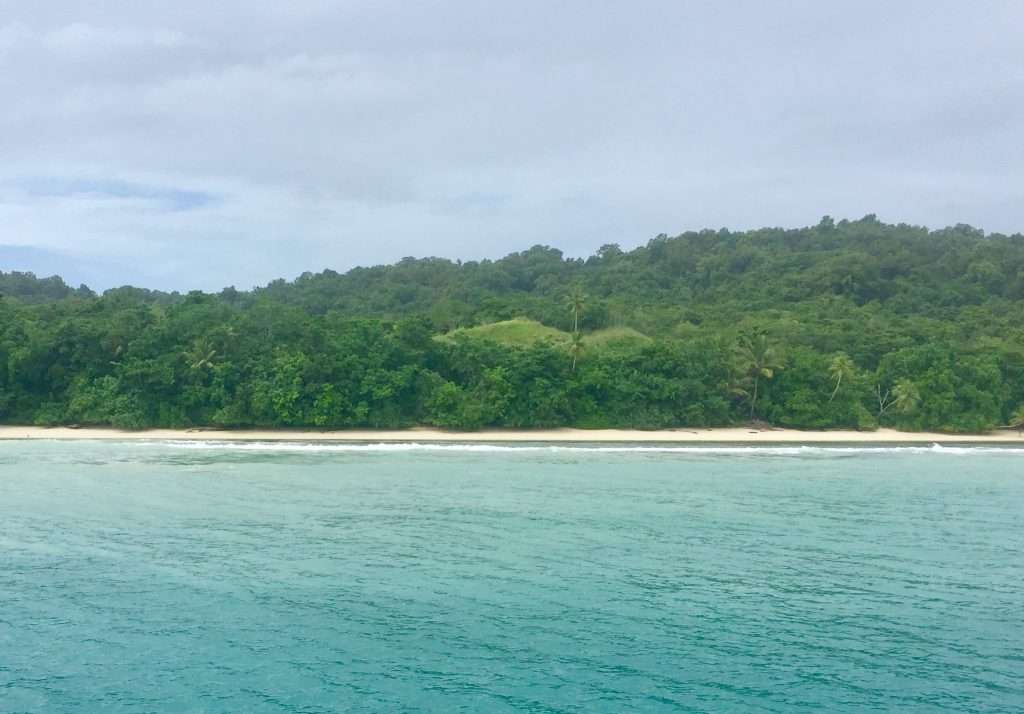
good catch mum!!!!
This is too much for me to handle. I log off now!!
(have fun it is really fantastic the way you celebrate your “pensioen”).
Gijs
Brilliant pictures. Very descriptive commentary. Makes me very envious.
Love to have been there…. Safe Travels Gideon and Francois
Hi Dirk & Annie
Looks like you are having a great time. Enjoy
Peter & Mandy